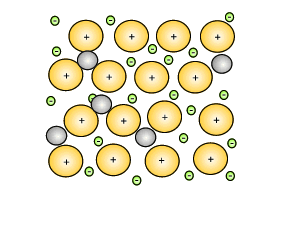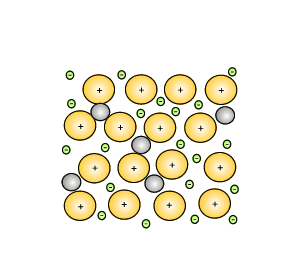Metallurgy-alloys
A measure of gold's purity is the carat. The higher the percentage of pure gold, the higher the carat.
24 carat = 100% gold
18 carat = 75% gold
14 carat = 58.3% gold
10 carat = 41.6% gold
Other metals mixed in with gold to make it harder are are copper and silver.


Addition of small amounts of another substance can significantly alter the properties of a metal. The substances are melted and then allowed to cool to form an alloy which is a mixture of two or more substances. Depending on the substances used alloys with desirable properties can be manufactured .
Examples of alloys include:
- steel which is a mixture of iron and less than 2% carbon;
- stainless steel is a mixture of iron and small amounts of chromium
and nickel;
- bronze is a mixture of copper and tin;
- 14 carat gold is a mixture of gold, copper and silver.

Some alloys conduct
an electrical current poorly compared to other metals, such as copper. When an electrical power supply is connected to
a metal wire the electrons flow in one direction past the metal atoms.
Consider the diagram on the right. It shows electrons flowing through an alloy. An alloy has many obstructions in its atomic structure to electron flow. These obstructions prevent the smooth flow of electrons through the metal.
Why do you think certain alloys make poor conductors of electricity?
Metals are good conductors of heat. This is because electrons help spread the heat along the metal surface.
Would heat flow well through an alloy that is a poor conducter of electricity? Look at the animation on the right.
